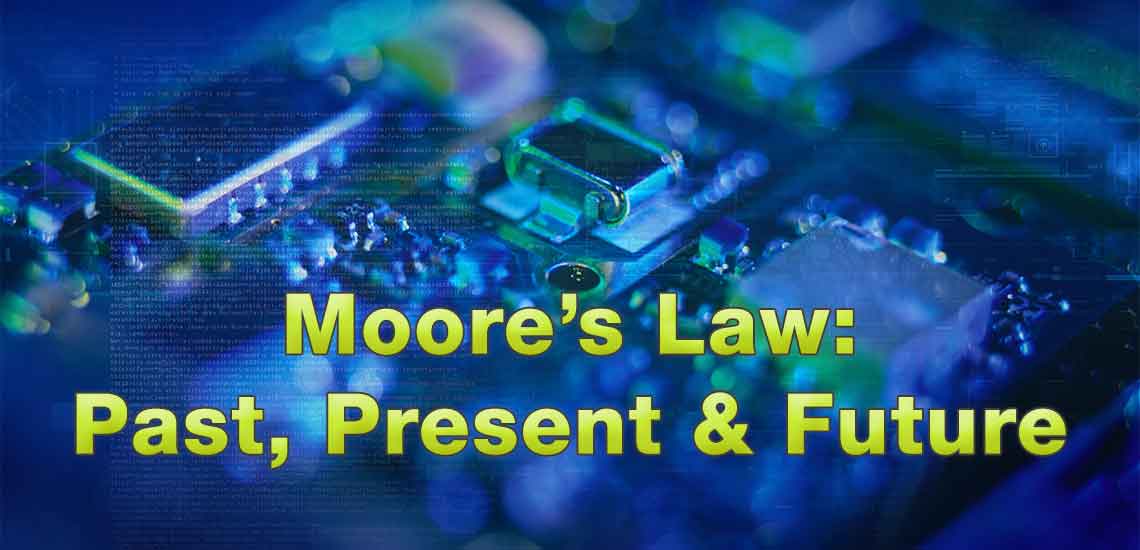In one of our posts last week we introduced our readers to Moore’s Law, a prediction made by Intel co-founder Gordon Moore regarding the increase of component density and complexity in integrated circuits based on observations he made about IC technology in the 1960s and 70s. Thanks to his deep understanding of developments in chip design and manufacturing, Moore proclaimed that the number of transistors in an integrated circuit would double approximately every two years.
Moore’s Law was instrumental in moving the semiconductor industry forward, revolutionizing computing by making it more accessible and affordable and driving any number of advances in science, education and business. In today’s post, we will look at recent reports questioning whether Moore’s Law is finally at its end, and if so, what predictions we can make for the chip industry – and the tech industry at large – as a result.
Is It the End for Moore’s Law?
It’s worth reminding our readers that Moore’s Law is technically not a “law” per se, but more of a prediction based on expert observation. It’s also important to note that it was not 100% accurate since announced by Gordon Moore; in fact, it was “revised” in the mid-1970s to stay in step with the rate of change in the industry. As such, it may not be a cataclysmic issue if Moore’s Law ceased to predict an accurate rate of change; however, the semiconductor industry would be operating without this touchstone or guiding principle for the first time in over 50 years.
The premise, as it has been discussed increasingly in news media in recent years, is that we are reaching some technical limitations in traditional silicon wafer manufacturing that cannot be overcome. This means that the rate of steady progress that the industry has witnessed over the last 50 years may taper off or come to a halt unless these limitations are managed somehow. Respected website Ars Technica went so far as to claim that “Moore’s law has died at the age of 51 after an extended illness.”
E&T spoke with the Director of Future Silicon Technology at ARM Research, who confirmed a similar outlook for the near future of silicon wafer manufacturing:
“I don’t think anyone could confidently tell you that they have a plan for 15 more years of Moore’s law,” says Greg Yeric, director of future silicon technology for ARM Research. “I do think we are approaching the limits of conventional scaling with silicon… If you just did this math, you could convince yourself that cost per transistor scaling will soon stop and you’d get pretty pessimistic about the industry’s future.”
Without diving too deeply into the technical details, the two main challenges facing silicon manufacturers like Intel and AMD are the limitations of photonics technology in its current state and the prohibitive cost of fabrication facilities and equipment featuring this most advanced manufacturing technology. Most industry experts would agree that these two issues are greatly intertwined and that the cost issue is the primary driver of change and a potential divergence from Moore’s Law.
Due to these technological and financial pressures, it is quite likely that other types of integrated circuits, such as those made from graphene or carbon nanotubes, quantum computers, or silicon wafers coated or layered with other materials, will possibly gain market share and wider adoption in the coming years. This would represent a major shift in the semiconductor industry in the next 20 to 30 years, but it is exciting in all the same ways that great technical leaps were made in silicon chip manufacturing in the last part of the 20th century.
Follow the links below for “Moore” reading on this topic:
E&T
https://eandt.theiet.org/content/articles/2017/05/moore-s-law-2017-an-uphill-battle/
Ars Technica
https://arstechnica.com/information-technology/2016/02/moores-law-really-is-dead-this-time/
Inc.com
https://www.inc.com/greg-satell/the-end-of-moores-law-will-change-how-we-need-to-t.html
MIT Technology Review
https://www.technologyreview.com/s/601441/moores-law-is-dead-now-what/
CNET
https://www.cnet.com/news/life-after-silicon-how-the-chip-industry-will-find-a-new-future/
Thanks for reading today’s Tech Blog! Care to share your thoughts about Moore’s Law or related topics? Feel free to drop us a line via social media or our Contact Us form and let us know – and what you might like to see in future posts!






